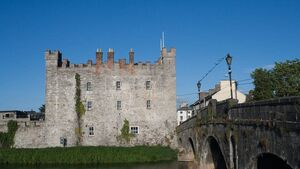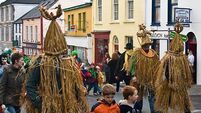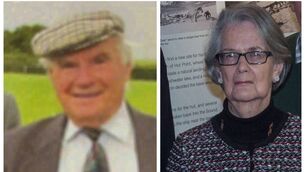New appreciation of Athy's heritage

White's Castle
WHEN I returned to Athy in June 1982 after an absence of 21 years, I found the town in much the same state as it was in the 1950s.
Its population had not seen any significant change in over 100 years, and it persistently stood in the mid-4,000s.
Today, that figure has increased to almost 11,000 as more and more people move out of Dublin, aware of the availability of less costly housing in south Kildare.
They bring with them a change of attitude to how the town is viewed. In the past, the natives of Athy and other ‘blow-ins’ of pre 1960 had no understanding or appreciation of the town’s history or heritage.
Athy was never referred to as a heritage town or historic town for the simple reason that we did not have an understanding of it.
Having gone through the education system at both primary and secondary levels in the local CBS School, I knew little or nothing of the town’s history.
Even though I passed White’s Castle at least four times every day while attending school in St John’s Lane, I was not aware of the significant part it played in the Confederate wars of the 1640s.
I learned of the Great Famine and the sad times in west Cork and Mayo during the 1840s but not of the effect that the famine had on the people of the Poor Law Union of Athy and the deaths in Athy’s workhouse.
Irish history finished in 1916 so as far as the Irish education system was concerned but even this did not extend to learning about the 1798 rebellion in our home town.
Knowledge of the six local men who marched out of White’s Castle and were hanged at the Grand Canal basin was lost to memory. Maybe the beheading of two of these six young men and the subsequent display of their severed heads on Crom a Boo bridge, which we pass over every day in 2025, was the reason the events of ’98 were lost in time.
We have revived our local history in recent years and honoured the dead of the Rebellion in ’98 with a monument in Emily Square, which was officially unveiled in 2010.
The workhouse inmates who died during the famine and whose bodies were committed to St Mary’s Cemetery to be buried in unmarked graves are remembered on the National Famine Commemoration Day in a ceremony in St Mary’s.
We have recovered our history, and the recovery is marked by the number of people who are on Facebook and other social media platforms showing their pride in the historic Town of Athy.
I get the feeling that most of these people are new additions to the town who appreciate the historical background rather more than the town natives. For too many decades, Athy families were haunted by the deaths of local men who died during World War 1 and the shameful disregard for those men who returned from the bloodied fields of France and Flanders.
This was an unrecognised part of Irish history and it was only with the holding of the first Remembrance Sunday events in St Michael’s Cemetery about thirty years ago that a gradual acceptance of that part of our local history was noted.
Not only do we now have a bigger attendance at our annual remembrance ceremony but St Michael’s cemetery has one of the finest and World War 1 memorials remembering the Athy men and woman who died in the war.
Times have changed, not only in terms of our knowledge and understanding of what was once a lost history but also the forms of the cultural heritage of the town.
Not only is Athy referred to as a historic town, but the term heritage town is often commonly used when it emerged that Athy was granted heritage status by Bord Failte in the late 1990s.
It brought to play various elements of Athy’s heritage and made us realise the importance of the cultural heritage which for so long was generated and protected by community effort.
Who can doubt the enormous cultural heritage of song, dance and drama which was created by the musical and dramatic society in the 1940s, the Social Club players and subsequent drama societies, the local bands nurtured by Joe O’Neill and his colleagues of St Joseph’s Terrace.
The first, band I have noted was that of the CYMS (Catholic Young Men's Society) in the 1890s, while the Churchtown Pipe Band helped create a lasting musical heritage. The built heritage of the town represented by White’s Castle, Woodstock Castle, The Town Hall, The Courthouse and many other buildings gives us a sense of antiquity which was not always appreciated in the absence of the history behind these buildings.
Those prize buildings were largely ignored to a shameful extent that in the 1950s when stone was taken from Woodstock Castle in order to help restore other buildings in Nelson Street.
We have now come to realise the importance of the different strands of our heritage and in many ways I feel we may have to look to the new arrivals to Athy to thank them for our changing attitudes to Athy’s heritage and history.
Please remember the official opening of Denise Curtin’s exhibition ‘Ó Mhná by the Athy novelist Niamh Boyce in the Art House, Leinster Street on Saturday 26 April.






